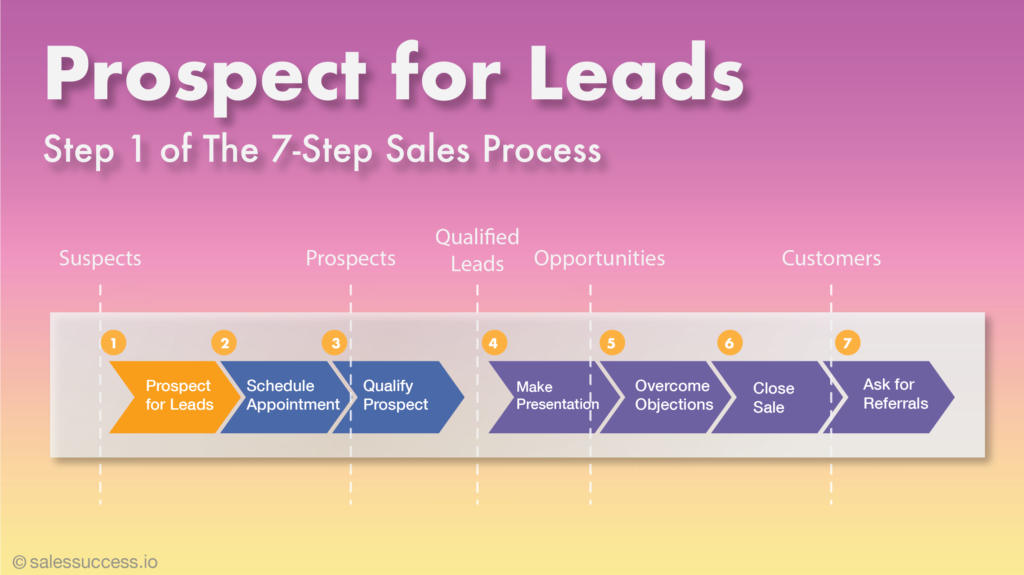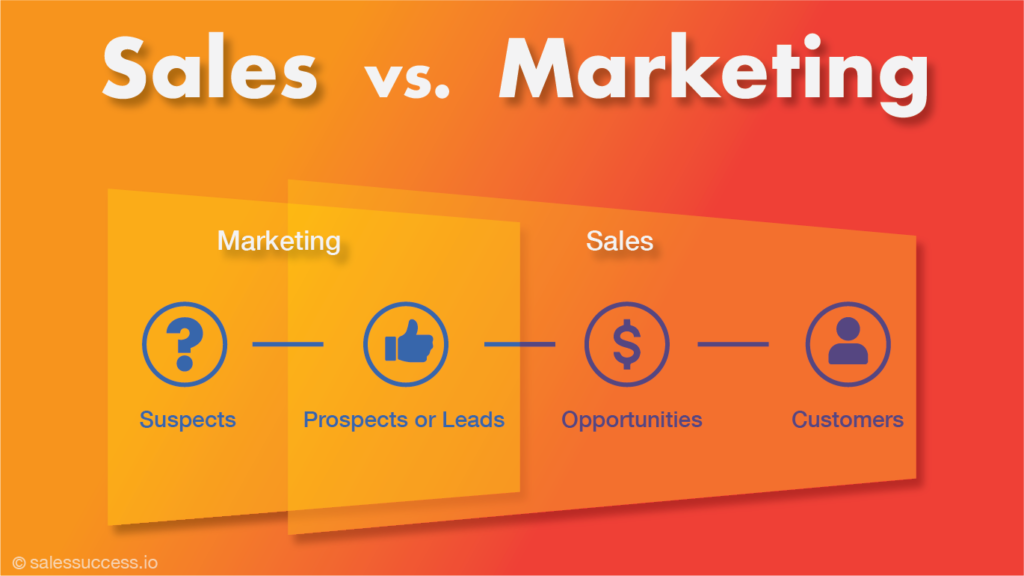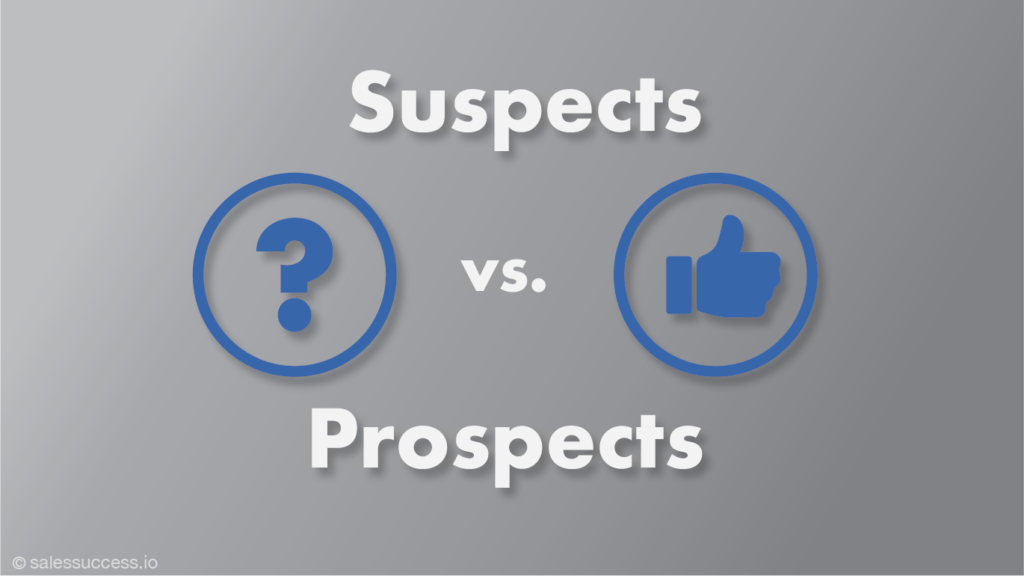- Sales Process or Cycle: The 7 Steps to Sales Success
- BDR vs. SR: Understanding the Sales Roles and Division of Labor
- Prospecting for Leads: Finding Your Next Customers
- Setting Appointment: Strategies and Tips for Successful Sales Calls
- Qualifying Prospect: The Key to Sales Success
- Making Presentation: Tips for a Compelling and Engaging Delivery
- Handling Objections: A Guide to Overcoming Customer Concerns
- Closing Sales: 44 Techniques and the Steps for a Successful Close
![]()
Introduction
B2B lead prospecting
In many B2B sales organizations, sales reps prospect for leads and sell to them. This approach is called end-to-end or full-cycle sales.
In our earlier blog post Sales Process or Cycle, we outlined the seven steps in end-to-end sales. In this post, we will delve deep into the first step: prospecting for leads.
Starting Points
In the first step of the sales process, you prospect for leads or potential customers for your offering and organization.
There are several starting points for salespersons when it comes to prospecting:
Existing Customers
One of the best starting points for prospecting is your existing customer base. They are likely to know other businesses that might benefit from your product or service. Approach your happy customers for referrals, and you might get some new opportunities.
Warm Leads from Marketing
Warm leads generated by marketing campaigns can be an excellent starting point for prospecting. They are individuals who express interest in your product or service and are more likely to convert into paying customers. You may not need to engage in any prospecting activity with these leads but you may have to nurture them to convert them into customers.
Cold Calling
While cold calling may not be as effective as it once was, it can still be a viable way to find leads. You can purchase lists of potential customers and call them up to see if they need your product or service.
Online Research
The internet is a vast resource for finding potential customers. You can use search engines, social media, and other online tools to research companies and their employees to identify potential leads.
Networking
Attending industry events, conferences, and other networking events can help you connect with potential customers. These events provide an opportunity to meet people face-to-face and build relationships that could lead to business opportunities.
Referral Programs
Offering referral programs to existing customers or partners can be an effective way to generate new leads. You can offer incentives to those who refer new customers to your business.
Identifying Target Leads
Identifying target leads is a critical step in the sales process. Your sales efforts will be much more effective if you focus on prospects most likely interested in your offering.
One starting point for identifying target leads is your ideal customer profile (ICP) and buyer personas (BPs). Your marketing team should have defined these for you. These profiles help you identify companies and individuals most likely to need and benefit from your product or service.
Another way to find target leads is by asking for referrals from your existing customers. They can provide valuable insights and introductions to other businesses that could use your product or service.

Read the book here.
Pinpointing the Leads
Once you have identified your target leads, the next step is to pinpoint the individuals or stakeholders within those companies who are most likely to make the buying decision. These individuals may be decision-makers, influencers, users, or gatekeepers.
One way to pinpoint these leads is to research the company online and identify the key stakeholders. This can include looking at the company’s website, LinkedIn profiles, and other online resources.
Another approach is to attend industry tradeshows, conferences, and seminars. These events can be a great way to network and connect with potential leads in person.
You can also leverage your network to identify potential leads. Reach out to any contacts you have within the target companies and ask for introductions to the key stakeholders.
Ultimately, your goal would be to engage with these leads and move them through the sales funnel. This may involve a combination of email, phone, and social media outreach, as well as in-person meetings and presentations.
Conclusion
In conclusion, prospecting for sales leads is critical to success in B2B sales. It requires a strategic approach, persistence, and a focus on building relationships with your target audience.
By defining your ideal customer profile, pinpointing your leads, and using best practices and strategies, you can effectively prospect for leads and convert them into sales.
Remember, prospecting is a continuous process and requires constant effort and improvement. With the right mindset and approach, you will succeed and grow your business.



